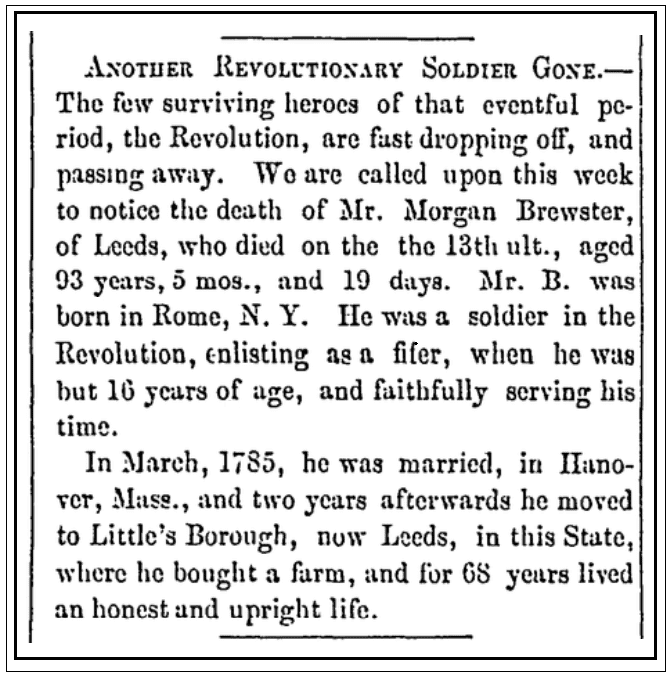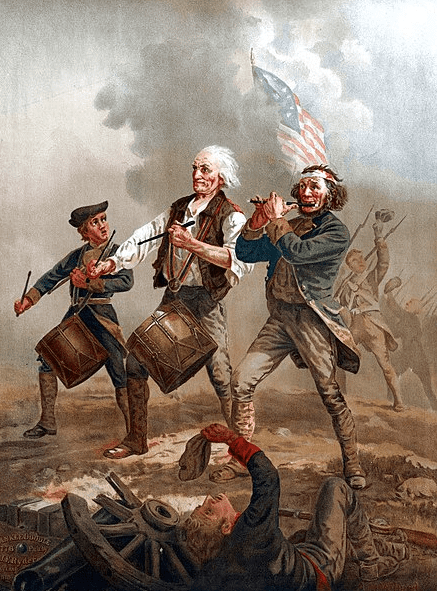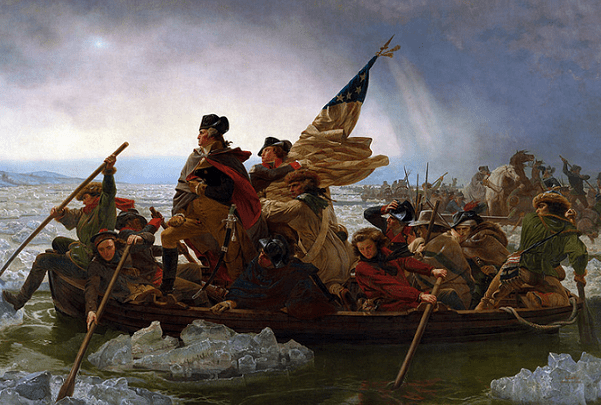I recently wrote about a drummer in the Revolutionary War – and today I am writing about a fifer.
An 1856 edition of the Maine Farmer remembered Morgan Brewster (1762-1856), a Revolutionary War veteran who died at age 93.

Fascinatingly, this article notes that Morgan enlisted as a fifer at the young age of 16:
“The few surviving heroes of that eventful period, the Revolution, are fast dropping off, and passing away. We are called upon this week to notice the death of Mr. Morgan Brewster, of Leeds, who died on the 13th ult., aged 93 years, 5 mos., and 19 days. Mr. B. was born in Rome, N.Y. He was a soldier in the Revolution, enlisting as a fifer, when he was but 16 years of age, and faithfully serving his time.”
I wanted to know more about the role of fifers in the military, so I ran a quick internet search.

Wikipedia gave me the following information:
“A fifer is a non-combatant military occupation of a foot soldier who originally played the fife during combat. The practice was instituted during the period of Early Modern warfare to sound signals during changes in formation, such as the line, and were also members of the regiment’s military band during marches.
“These soldiers… were used to help infantry battalions to keep marching pace from the right of the formation in coordination with the drummers positioned at the centre, and relayed orders in the form of sequences of musical signals. The fife was particularly useful because of its high pitched sound, which could be heard over the sounds of battle.”
The Maine Farmer article also mentioned that after completing his military service, Morgan married in March 1785 [to Martha Stetson (1760-1838)], and moved to Leeds, Androscoggin County, Maine, where he lived the remaining 68 years of his life.
Morgan died and was buried in Leeds, Maine.
Mayflower passenger William Brewster is Morgan’s 4th great-grandfather.
Related Articles:
